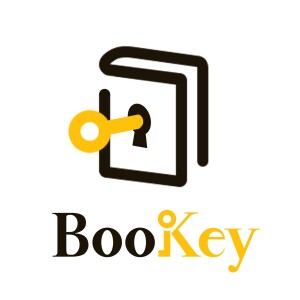
- Podcast Features
-
Monetization
-
Ads Marketplace
Join Ads Marketplace to earn through podcast sponsorships.
-
PodAds
Manage your ads with dynamic ad insertion capability.
-
Apple Podcasts Subscriptions Integration
Monetize with Apple Podcasts Subscriptions via Podbean.
-
Live Streaming
Earn rewards and recurring income from Fan Club membership.
-
Ads Marketplace
- Podbean App
-
Help and Support
-
Help Center
Get the answers and support you need.
-
Podbean Academy
Resources and guides to launch, grow, and monetize podcast.
-
Podbean Blog
Stay updated with the latest podcasting tips and trends.
-
What’s New
Check out our newest and recently released features!
-
Podcasting Smarter
Podcast interviews, best practices, and helpful tips.
-
Help Center
-
Popular Topics
-
How to Start a Podcast
The step-by-step guide to start your own podcast.
-
How to Start a Live Podcast
Create the best live podcast and engage your audience.
-
How to Monetize a Podcast
Tips on making the decision to monetize your podcast.
-
How to Promote Your Podcast
The best ways to get more eyes and ears on your podcast.
-
Podcast Advertising 101
Everything you need to know about podcast advertising.
-
Mobile Podcast Recording Guide
The ultimate guide to recording a podcast on your phone.
-
How to Use Group Recording
Steps to set up and use group recording in the Podbean app.
-
How to Start a Podcast
-
Podcasting
- Podcast Features
-
Monetization
-
Ads Marketplace
Join Ads Marketplace to earn through podcast sponsorships.
-
PodAds
Manage your ads with dynamic ad insertion capability.
-
Apple Podcasts Subscriptions Integration
Monetize with Apple Podcasts Subscriptions via Podbean.
-
Live Streaming
Earn rewards and recurring income from Fan Club membership.
-
Ads Marketplace
- Podbean App
- Advertisers
- Enterprise
- Pricing
-
Resources
-
Help and Support
-
Help Center
Get the answers and support you need.
-
Podbean Academy
Resources and guides to launch, grow, and monetize podcast.
-
Podbean Blog
Stay updated with the latest podcasting tips and trends.
-
What’s New
Check out our newest and recently released features!
-
Podcasting Smarter
Podcast interviews, best practices, and helpful tips.
-
Help Center
-
Popular Topics
-
How to Start a Podcast
The step-by-step guide to start your own podcast.
-
How to Start a Live Podcast
Create the best live podcast and engage your audience.
-
How to Monetize a Podcast
Tips on making the decision to monetize your podcast.
-
How to Promote Your Podcast
The best ways to get more eyes and ears on your podcast.
-
Podcast Advertising 101
Everything you need to know about podcast advertising.
-
Mobile Podcast Recording Guide
The ultimate guide to recording a podcast on your phone.
-
How to Use Group Recording
Steps to set up and use group recording in the Podbean app.
-
How to Start a Podcast
-
Help and Support
- Discover

Unleashing Innovation: Decoding the Mystery of Competing Against Luck
Competing Against Luck by Clayton M. Christensen is a book that explores the concept of "jobs to be done" and how understanding this concept can help businesses succeed in the competitive market.The central idea of the book is that customers don't just buy products or services; they "hire" them to do a specific job. Therefore, businesses need to focus on understanding the job that customers are hiring their products or services for and make improvements accordingly.The book proposes a framework called the "Jobs Theory" to help businesses identify the true motivations behind customer choices. It argues that customers hire a product or service to achieve a desired outcome, which can be functional, emotional, or social. By identifying these jobs, companies can better shape their products and marketing strategies to meet customer expectations.The author also emphasizes the importance of uncovering customer "jobs" before competitors do by conducting thorough research and customer interviews. By understanding the customer's desired outcome, businesses can innovate and create products that truly meet their needs.Additionally, the book introduces the concept of the "Value Proposition," which is the unique combination of elements that create value for customers. According to the author, businesses need to align their value propositions with the customer's desired outcomes to create successful products.Overall, Competing Against Luck provides a new perspective on innovation and market success. By focusing on the job to be done and understanding customer motivations, businesses can create products that truly solve customer problems and ultimately gain a competitive advantage.
Chapter 2:the meaning of Competing Against Luck Book
"Competing Against Luck: The Story of Innovation and Customer Choice" is a book written by Clayton M. Christensen, Karen Dillon, Taddy Hall, and David S. Duncan. The book explores the concept of "jobs-to-be-done" and how it can be used to drive successful innovation.The central argument of the book is that customers don't buy products or services because of their features or attributes; rather, they "hire" them to get a job done. Understanding the jobs that customers are trying to get done is essential for companies to accurately identify opportunities for innovation and provide products or services that truly address customers' needs.Christensen and his co-authors introduce the concept of the "job-to-be-done theory," which asserts that customers purchase products or services to make progress in their lives by overcoming challenges or problems. By uncovering the deeper motivations and circumstances behind customers' choices, businesses can design offerings that align more closely with customers' desired outcomes.The book also highlights the challenges that companies face when they rely solely on traditional market research methods and focus on customer demographics or product attributes as indicators of success. It argues that these approaches often fall short in providing a comprehensive understanding of the customers' true jobs-to-be-done and can lead to misguided product development or marketing strategies.Throughout the book, the authors present numerous real-world examples and case studies to illustrate the practical application of the jobs-to-be-done theory, from industries like fast food, healthcare, and education. They also provide frameworks and methodologies for identifying and leveraging customers' jobs-to-be-done to drive innovation and business growth.In essence, "Competing Against Luck" offers a new perspective on innovation and customer understanding, shedding light on the importance of identifying and addressing customers' underlying motivations and job-related needs to create successful products and services.
Chapter 3:Competing Against Luck Book chapters
Competing Against Luck by Clayton M. Christensen explores the concept of "jobs to be done" and how understanding this concept can help businesses innovate and create products that truly meet customer needs. The book is divided into several chapters, each focusing on a different aspect of the concept.
Chapter 1: The Job to Be Done: Introduces the concept of the "job to be done" and explains how customers do not simply buy products, but hire them to do a specific job. It emphasizes the importance of understanding the job that customers are trying to get done in order to create successful products.
Chapter 2: The Customer's Job: Explores the idea that customers hire products to make progress in their lives. It delves into how customers evaluate and prioritize the jobs they need to get done and how these jobs evolve over time.
Chapter 3: Jobs in Social Context: Discusses the social aspects of the jobs to be done. It explains how customers consider the opinions and actions of others when hiring products and how these social factors can influence their decision-making process.
Chapter 4: Jobs at Home: Examines the jobs that customers need to get done within their homes. It explores how different factors, such as time, simplicity, and cost, play a role in the decision-making process.
Chapter 5: Understanding Customers in Research: Provides insights into the importance of conducting thorough research to truly understand the customers' jobs to be done. It emphasizes the need to go beyond traditional surveys and interviews and to observe customers in real-life situations to gain deeper insights.
Chapter 6: The Six Jobs Framework: Introduces a framework to help businesses identify the customer's job to be done more effectively. It presents six different job dimensions that can guide companies in understanding the core functional, emotional, and social aspects of a customer's job.
Chapter 7: Sustaining Innovation and Disruptive Innovation: Explores the relationship between sustaining innovation and disruptive innovation in the context of jobs to be done. It discusses how understanding the jobs that products fulfill can help businesses better predict disruption and innovate to stay ahead of competitors.
Chapter 8: Knowing What to Make: Examines how companies can use the insights gained from understanding the job to be done to guide product development. It discusses the importance of designing products that perfectly align with the customer's job, rather than relying on customer feedback alone.
Chapter 9: The Competitors: Investigates the idea that customers are not loyal to specific products but to the company that best fulfills their job to be done. It emphasizes the need for companies to view their competition as other solutions that customers may hire to get the job done.
Chapter 10: Jobs and Technology: Explores the role of technology in helping customers get their jobs done. It discusses how technology can either facilitate or hinder the progress customers are trying to make and emphasizes the importance of aligning technology with the job to be done.
Overall, Competing Against Luck provides a comprehensive exploration of the concept of jobs to be done and offers practical guidance for businesses to innovate and create products that truly meet customer needs.
Chapter 4: 10 Quotes From Competing Against Luck Book
1."When we distill success down to its essence, it comes down to finding a job that people need done, and doing it better than anyone else."
2. "Jobs theory teaches us that markets aren't just made up of customers who want to buy a product; they're made up of people who want to get a job done."
3. "When companies innovate by focusing on the job, customers will hire that product or service to help them do it and the company will prosper."
4. "Innovation is not about developing new technologies, but about understanding what makes people's lives better and then converting that understanding into products and services."
5. "By focusing on the job customers are trying to get done, companies can identify opportunities for growth and differentiation in the market."
6. "A successful strategy is not based on predicting the future, but on understanding the present and why customers make the choices they do."
7. "Companies should focus on creating better outcomes for their customers, rather than simply selling products or services."
8. "Don't just focus on your existing customers, but also on the nonconsumers who could benefit from your product or service."
9. "The key to success is a deep understanding of the job that people are trying to accomplish, and finding ways to make that job easier and more effective."
10. "Competing against luck means focusing on the real reason customers buy products or services, and constantly adapting and improving to meet their needs better than anyone else."
More Episodes
Create your
podcast in
minutes
- Full-featured podcast site
- Unlimited storage and bandwidth
- Comprehensive podcast stats
- Distribute to Apple Podcasts, Spotify, and more
- Make money with your podcast
It is Free
- Privacy Policy
- Cookie Policy
- Terms of Use
- Consent Preferences
- Copyright © 2015-2025 Podbean.com





